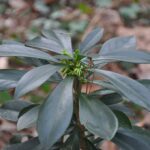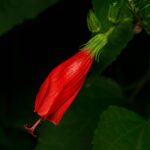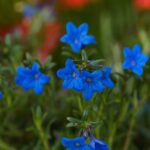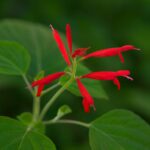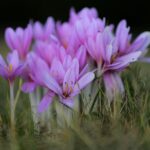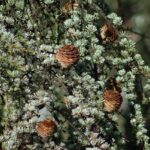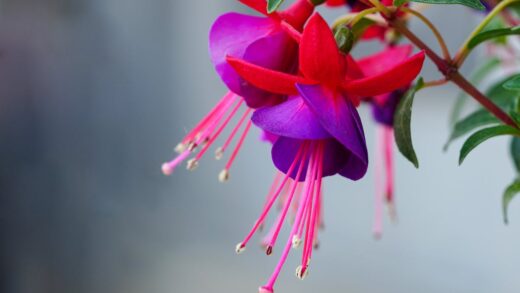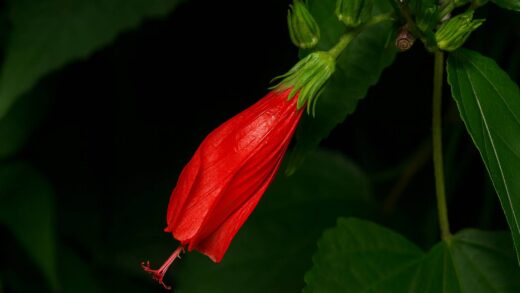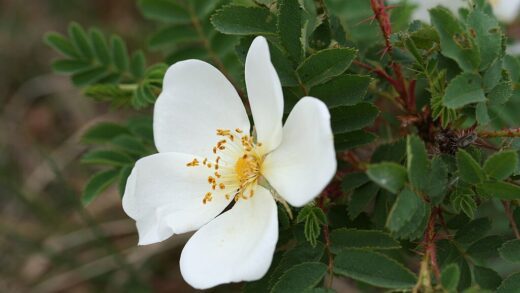Providing the appropriate amount and intensity of light is a cornerstone of successful bouvardia cultivation, directly influencing the plant’s overall health, growth habit, and, most crucially, its ability to produce an abundance of flowers. Originating from the sunny but often tree-dappled environments of Central America, bouvardia thrives in bright conditions but can be sensitive to the harsh, direct rays of the midday sun. Understanding this nuanced need for light and replicating it in a home or garden setting is essential for encouraging the development of lush foliage and the vibrant, fragrant blooms for which the plant is celebrated. Insufficient light will lead to a leggy, non-flowering plant, while excessive direct sun can cause scorching and stress.
The ideal light exposure for a bouvardia is several hours of bright, indirect sunlight each day. In an indoor setting, this can be achieved by placing the plant near an east-facing window, where it will receive the gentle, direct morning sun, followed by bright, indirect light for the rest of the day. A south or west-facing window can also be suitable, but the plant may need to be positioned a few feet back from the glass or shielded by a sheer curtain to diffuse the intense afternoon sun, which can scorch the delicate leaves and flowers. Rotating the pot every week or so will ensure that all sides of the plant receive even light exposure, promoting a symmetrical and balanced growth habit.
When grown outdoors in a garden bed or container during the summer months, the principle of bright, indirect light still applies. A location that receives full sun in the morning and then partial or dappled shade during the hottest part of the afternoon is perfect. Planting bouvardia under the canopy of larger, high-branching trees can create this ideal filtered light environment. This protects the plant from the stress of excessive heat and sun exposure while still providing it with the energy it needs for photosynthesis and flower production.
The duration of light is just as important as its intensity. Bouvardia plants generally require at least six hours of bright light per day to flower profusely. In lower light conditions, the plant may still grow and produce healthy-looking foliage, but it will likely be sparse and “leggy,” meaning the stems will be elongated with wide spacing between the leaves as the plant stretches in search of more light. More significantly, a lack of adequate light is one of the most common reasons for a bouvardia to fail to produce buds and flowers.
Monitoring the plant’s appearance is the best way to gauge whether its light needs are being met. Healthy leaves should be a rich, deep green color. If the leaves start to appear pale or yellowish, it could be an indication of too much direct sun. Conversely, if the plant’s growth is weak and spindly with few or no flowers, it is a clear sign that it needs to be moved to a brighter location. Adjusting the plant’s position based on these visual cues is key to finding the perfect lighting balance.
More articles on this topic
Understanding bright, indirect light
The term “bright, indirect light” is frequently used in horticulture, but it can be ambiguous for many gardeners. For bouvardia, this means placing the plant in a location where it is exposed to a significant amount of ambient light from the sky, but is shielded from the direct, focused rays of the sun for most of the day, especially during the intense midday and afternoon hours. An easy way to visualize this is to consider the quality of light just inside a brightly lit window that is covered by a sheer curtain, or the dappled light found on the forest floor under a tall tree canopy.
Indoors, the best locations for achieving bright, indirect light are typically near windows that do not face south or west during the peak sun hours, or are set back from them. An east-facing window is often considered ideal for many houseplants, including bouvardia, because it provides a few hours of direct morning sun when the rays are less intense and the temperatures are cooler. For the remainder of the day, the plant receives bright, indirect illumination. A north-facing window can also provide consistent indirect light all day, but it may not be strong enough to promote optimal flowering unless the window is very large and unobstructed.
You can test the light intensity in a specific spot using a simple hand test. Place your hand about 30 centimeters above the location where you intend to put your plant. If your hand casts a sharp, clearly defined shadow, the light is likely too direct and intense. If it casts a soft, blurry shadow, the light is bright and indirect, which is perfect. If it casts a very faint or no shadow at all, the location is likely too shady for a bouvardia to thrive and flower well.
It is also important to remember that the intensity and duration of natural light change with the seasons. A location that provides perfect light in the summer may become too dim in the winter as the sun’s path across the sky lowers. Conversely, a spot that is suitable in winter may become too intense in the summer. Be prepared to move your bouvardia to different locations within your home throughout the year to ensure it is consistently receiving the optimal amount of light for its needs.
More articles on this topic
Signs of insufficient light
One of the most obvious and common symptoms of a bouvardia not receiving enough light is a lack of flowering. The plant may appear to be healthy, with green leaves and steady growth, but it will fail to produce any flower buds. This is because flowering is a very energy-intensive process, and the plant simply cannot generate enough energy through photosynthesis in low-light conditions to support the development of blooms. If your mature bouvardia is not flowering, inadequate light should be your first suspect.
Another clear indicator of insufficient light is etiolation, more commonly known as legginess. The plant will appear stretched and spindly, with abnormally long distances between the leaf nodes on the stems. This is a survival mechanism where the plant diverts its energy into growing taller as quickly as possible in an attempt to reach a brighter light source. While the plant is growing, this type of growth is weak, unattractive, and unsustainable in the long term.
The foliage of a light-deprived bouvardia will also provide clues. The leaves may be smaller than normal, and their color may be a pale or washed-out green rather than the vibrant, deep green of a healthy plant. In severe cases of light deprivation, the lower leaves may begin to turn yellow and drop off as the plant sheds its older foliage to conserve energy and redirect resources to the newer growth that is closer to the potential light source. The overall appearance will be sparse and thin rather than full and bushy.
If you observe these symptoms, the solution is to move the plant to a location that receives more light. This transition should be done gradually if the change is significant. Moving a plant directly from a very dim spot into very bright light can shock it and cause leaf scorch. Instead, move it to a slightly brighter spot for a week, and then to its final, brighter location. Over time, with adequate light, the new growth will be more compact, and the plant should begin to produce the flower buds you have been waiting for.
The dangers of excessive direct sunlight
While bouvardia is a light-loving plant, it is susceptible to damage from too much direct, intense sunlight, especially the harsh afternoon sun. The most immediate and visible sign of sun-scald or leaf burn is the appearance of brown, dry, or crispy patches on the leaves. In some cases, the leaves may first turn a pale, washed-out yellow or white in the most exposed areas before turning brown. This damage is irreversible, and the affected parts of the leaf will not recover.
In addition to leaf scorch, excessive sun exposure can cause the vibrant colors of the bouvardia’s flowers to fade prematurely. The intense light and heat can bleach the pigments in the petals, leading to a washed-out and less appealing display. The flowers may also wilt more quickly and have a shorter lifespan on the plant. The overall stress from too much sun and heat can cause the plant to drop its buds before they even have a chance to open.
A plant under the stress of excessive sunlight will also lose water more rapidly through transpiration from its leaves. This can lead to wilting, even if the soil is adequately moist. The plant simply cannot draw water up through its roots fast enough to keep up with the rate of moisture loss from its foliage. This chronic water stress weakens the plant over time, making it more vulnerable to pests and diseases, and diverting its energy from growth and flowering to simple survival.
If you notice signs of sun damage on your bouvardia, you must immediately move it to a location with more protection. A spot that offers dappled shade during the afternoon or is shielded by a sheer curtain will provide the necessary relief. While the burned leaves will not heal, you should prune away the most heavily damaged foliage to improve the plant’s appearance. With the right adjustments, the plant will soon begin to produce new, healthy leaves that are properly adapted to its improved, less intense light environment.
Using artificial light for bouvardia
In situations where sufficient natural light is not available, such as in a basement, a north-facing room, or during the dark winter months, artificial lighting can be an excellent way to successfully grow bouvardia. Modern grow lights can provide the specific light spectrums that plants need for photosynthesis and flowering. The most common and effective options for home growers are fluorescent lights and LED (Light Emitting Diode) grow lights.
Standard fluorescent lights, especially T5 high-output (HO) tubes, are a cost-effective and efficient choice. A simple shop light fixture with two to four tubes can provide enough light for one or more bouvardia plants. The fixture should be positioned so that the tops of the plants are about 15-30 centimeters below the bulbs. It is crucial to keep the lights close to the foliage, as the intensity of fluorescent light diminishes rapidly with distance. The lights should be on for 12-16 hours per day, and using a simple timer can automate this schedule.
LED grow lights are becoming increasingly popular due to their energy efficiency, long lifespan, and their ability to be engineered to produce specific light wavelengths that are most beneficial for plant growth. Full-spectrum LED lights, which mimic the light of the sun, are an excellent all-purpose choice for growing bouvardia indoors. They produce less heat than other types of lights, which means they can be placed closer to the plants without the risk of burning the foliage.
When using artificial lights, it is important to remember that this becomes the plant’s primary energy source. Therefore, you must be consistent, providing light for a long enough duration each day to support healthy growth. You will also need to continue your regular watering and feeding schedule, as the plant will be actively photosynthesizing and growing, even in the middle of winter. Using grow lights can be a fantastic way to enjoy a thriving, blooming bouvardia year-round, regardless of the natural light conditions in your home.







